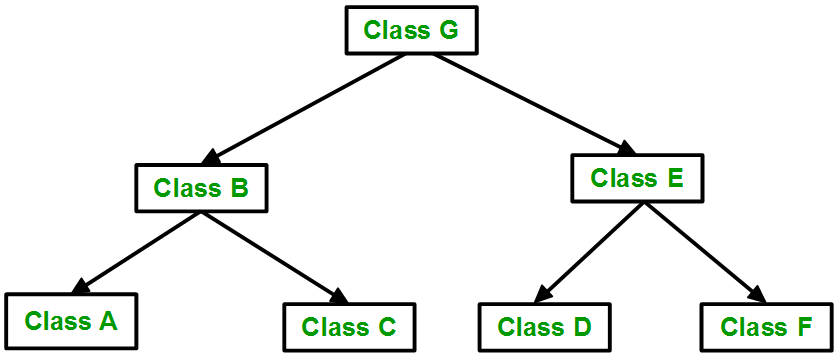4.8: Types of Inheritance
- Page ID
- 34665
\( \newcommand{\vecs}[1]{\overset { \scriptstyle \rightharpoonup} {\mathbf{#1}} } \) \( \newcommand{\vecd}[1]{\overset{-\!-\!\rightharpoonup}{\vphantom{a}\smash {#1}}} \)\(\newcommand{\id}{\mathrm{id}}\) \( \newcommand{\Span}{\mathrm{span}}\) \( \newcommand{\kernel}{\mathrm{null}\,}\) \( \newcommand{\range}{\mathrm{range}\,}\) \( \newcommand{\RealPart}{\mathrm{Re}}\) \( \newcommand{\ImaginaryPart}{\mathrm{Im}}\) \( \newcommand{\Argument}{\mathrm{Arg}}\) \( \newcommand{\norm}[1]{\| #1 \|}\) \( \newcommand{\inner}[2]{\langle #1, #2 \rangle}\) \( \newcommand{\Span}{\mathrm{span}}\) \(\newcommand{\id}{\mathrm{id}}\) \( \newcommand{\Span}{\mathrm{span}}\) \( \newcommand{\kernel}{\mathrm{null}\,}\) \( \newcommand{\range}{\mathrm{range}\,}\) \( \newcommand{\RealPart}{\mathrm{Re}}\) \( \newcommand{\ImaginaryPart}{\mathrm{Im}}\) \( \newcommand{\Argument}{\mathrm{Arg}}\) \( \newcommand{\norm}[1]{\| #1 \|}\) \( \newcommand{\inner}[2]{\langle #1, #2 \rangle}\) \( \newcommand{\Span}{\mathrm{span}}\)\(\newcommand{\AA}{\unicode[.8,0]{x212B}}\)
Hierarchical Inheritance: In this type of inheritance, more than one sub class is inherited from a single base class. i.e. more than one derived class is created from a single base class.

// C++ program to implement // Hierarchical Inheritance #include <iostream> using namespace std; // base class class Vehicle { public: Vehicle() { cout << "This is a Vehicle" << endl; } }; // first sub class class Car: public Vehicle { public: Car() { cout << "This is a Car" << endl; } }; // second sub class class Bus: public Vehicle { public: Bus() { cout << "This is a Bus" << endl; } }; // main function int main() { // creating object of sub class will // invoke the constructor of base class Car obj1; Bus obj2; return 0; }
Output - For each of the objects the parent class constructor gets called as well as the child class constructor.
This is a Vehicle
This is a Car
This is a Vehicle
This is a Bus
![]()
Contributed by Harsh Agarwal
Geeks for Geeks


